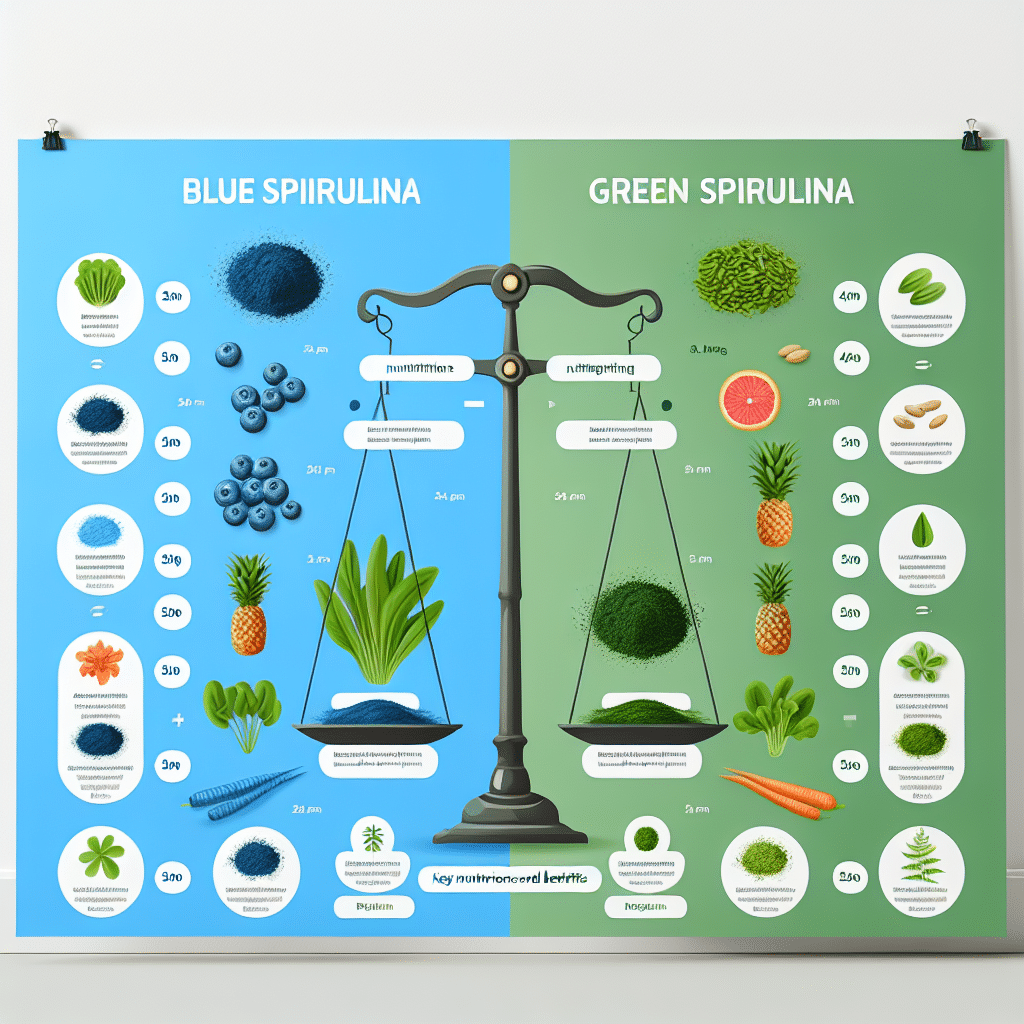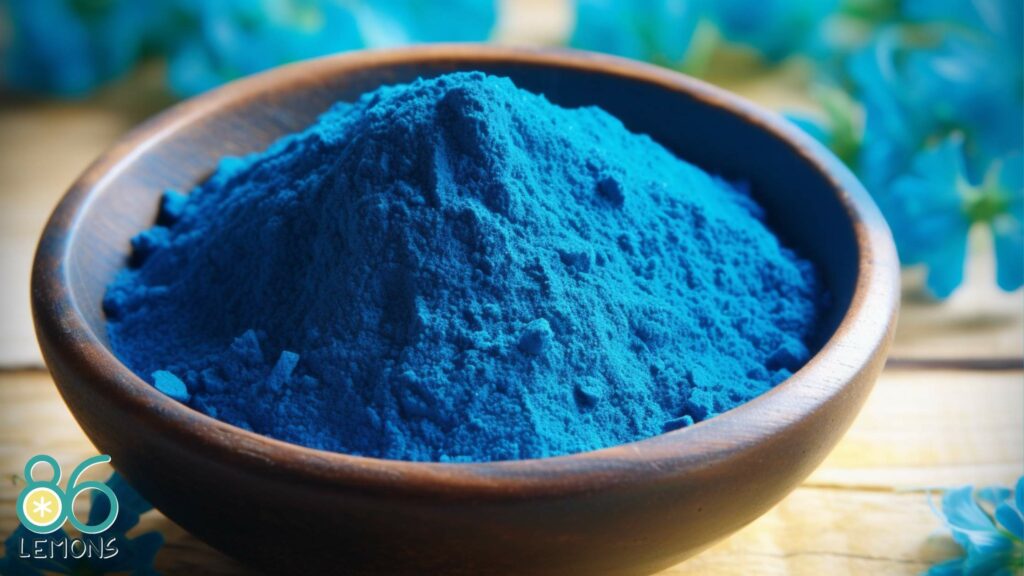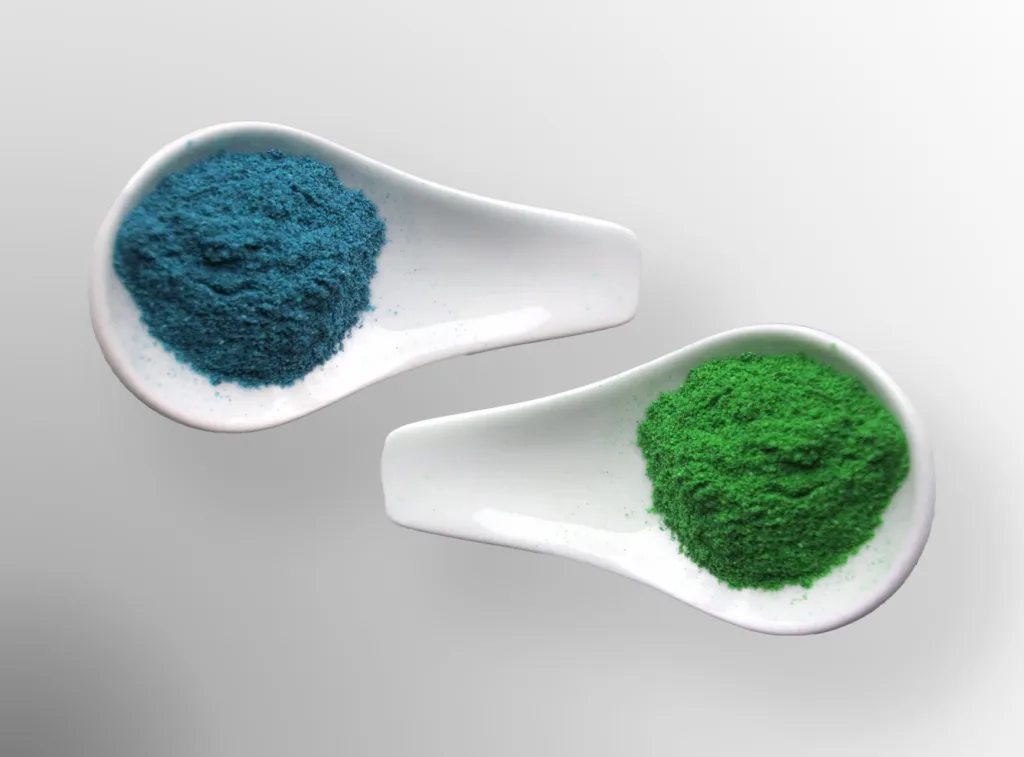Difference Between Blue And Green Spirulina

A health food frenzy is sweeping the nation, but consumers are increasingly confused about the true differences between blue and green spirulina. This article breaks down the science and dispels the myths surrounding these potent algae varieties.
Spirulina, a blue-green algae lauded for its nutritional benefits, is available in both green and blue forms, leading many to question their distinctions. Understanding the key differences, from pigment composition to health effects, is crucial for making informed dietary choices.
What is Spirulina?
Spirulina is a type of cyanobacteria, often referred to as blue-green algae, that grows in both fresh and saltwater. It's a powerhouse of nutrients, including protein, vitamins, and antioxidants.
It has become a popular dietary supplement touted for its potential health benefits.
The Color Divide: Phycocyanin's Role
The primary difference between blue and green spirulina lies in the concentration of a pigment called phycocyanin. This pigment is responsible for spirulina’s blue hue.
Green spirulina, the most common form, contains a moderate level of phycocyanin. On the other hand, blue spirulina is essentially a concentrated extract of phycocyanin.
Extraction Processes Matter
The extraction process dramatically influences the final product. Green spirulina is typically the whole, dried algae, ground into a powder.
Blue spirulina, also known as phycocyanin extract, undergoes a more complex process to isolate and purify the blue pigment. This involves separating phycocyanin from the other components of the algae.
Nutritional Profiles Compared
While both forms are nutritious, their nutritional profiles differ. Green spirulina offers a broader range of nutrients, including vitamins, minerals, and antioxidants beyond phycocyanin.
Blue spirulina is primarily a source of phycocyanin. It lacks the full spectrum of nutrients found in the whole algae.
Health Benefits: Focusing on Phycocyanin
Many of the purported health benefits associated with spirulina are attributed to phycocyanin. Studies suggest it possesses antioxidant, anti-inflammatory, and neuroprotective properties.
Therefore, blue spirulina, with its concentrated phycocyanin, may offer a more potent dose of these specific benefits.
Antioxidant and Anti-Inflammatory Effects
Phycocyanin is a powerful antioxidant, helping to combat free radicals in the body. Research suggests it can reduce inflammation by inhibiting inflammatory pathways.
Potential Neuroprotective Properties
Some studies indicate that phycocyanin may protect against neurodegenerative diseases. This is achieved by reducing oxidative stress and inflammation in the brain.
Taste and Usage
Green spirulina has a distinct, earthy, and sometimes slightly fishy taste. This makes it more suited for incorporation into smoothies or recipes where the flavor can be masked.
Blue spirulina, having undergone extraction, has a milder, less pronounced taste. This makes it a more versatile ingredient for adding color and potential health benefits to foods and beverages without significantly altering the flavor.
Cost Considerations
Blue spirulina is generally more expensive than green spirulina. This is due to the more complex extraction and purification processes required to obtain the concentrated phycocyanin.
Consumers should factor in cost alongside nutritional needs and intended usage when choosing between the two.
Potential Side Effects
Both green and blue spirulina are generally considered safe for consumption. However, some individuals may experience mild side effects such as nausea, stomach upset, or diarrhea.
It's important to start with a small dose and gradually increase intake to assess tolerance. Individuals with autoimmune diseases should consult their doctor before consuming spirulina.
The Verdict: Which One Should You Choose?
The choice between blue and green spirulina depends on individual needs and preferences. If you are looking for a broad spectrum of nutrients and don't mind the stronger taste, green spirulina is a good option.
If you are primarily interested in the potential benefits of phycocyanin and prefer a milder taste, blue spirulina may be a better choice. Either way, ensure you are sourcing your spirulina from a reputable supplier to guarantee purity and quality.
Ongoing Research and Future Developments
Research into the potential health benefits of spirulina, particularly phycocyanin, is ongoing. Scientists are exploring its role in preventing and treating various diseases.
Future developments may include enhanced extraction methods to increase the yield and purity of phycocyanin. It also includes the development of new applications for both blue and green spirulina in the food, cosmetic, and pharmaceutical industries.


















